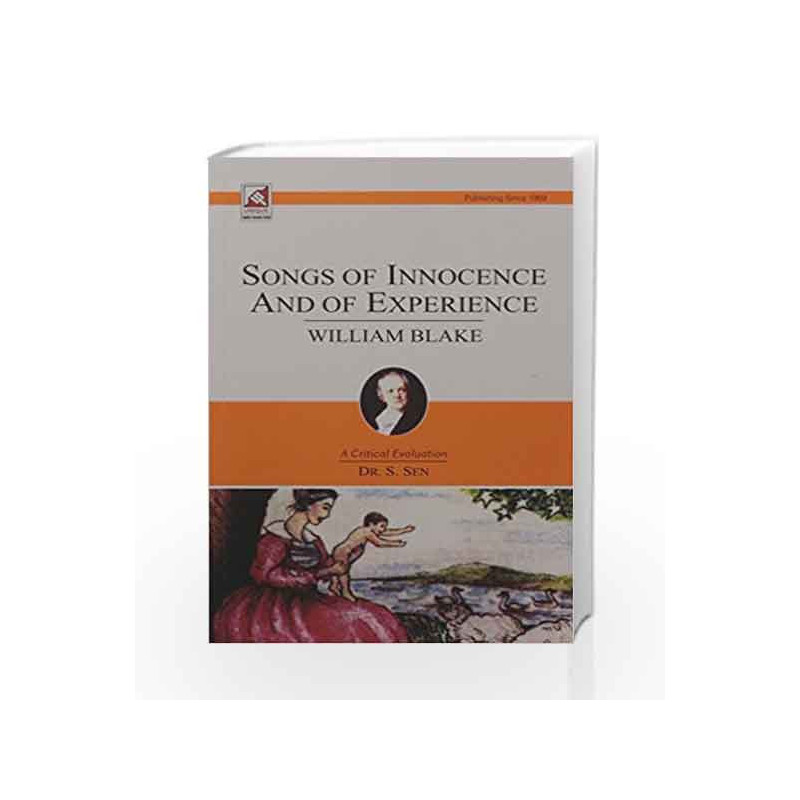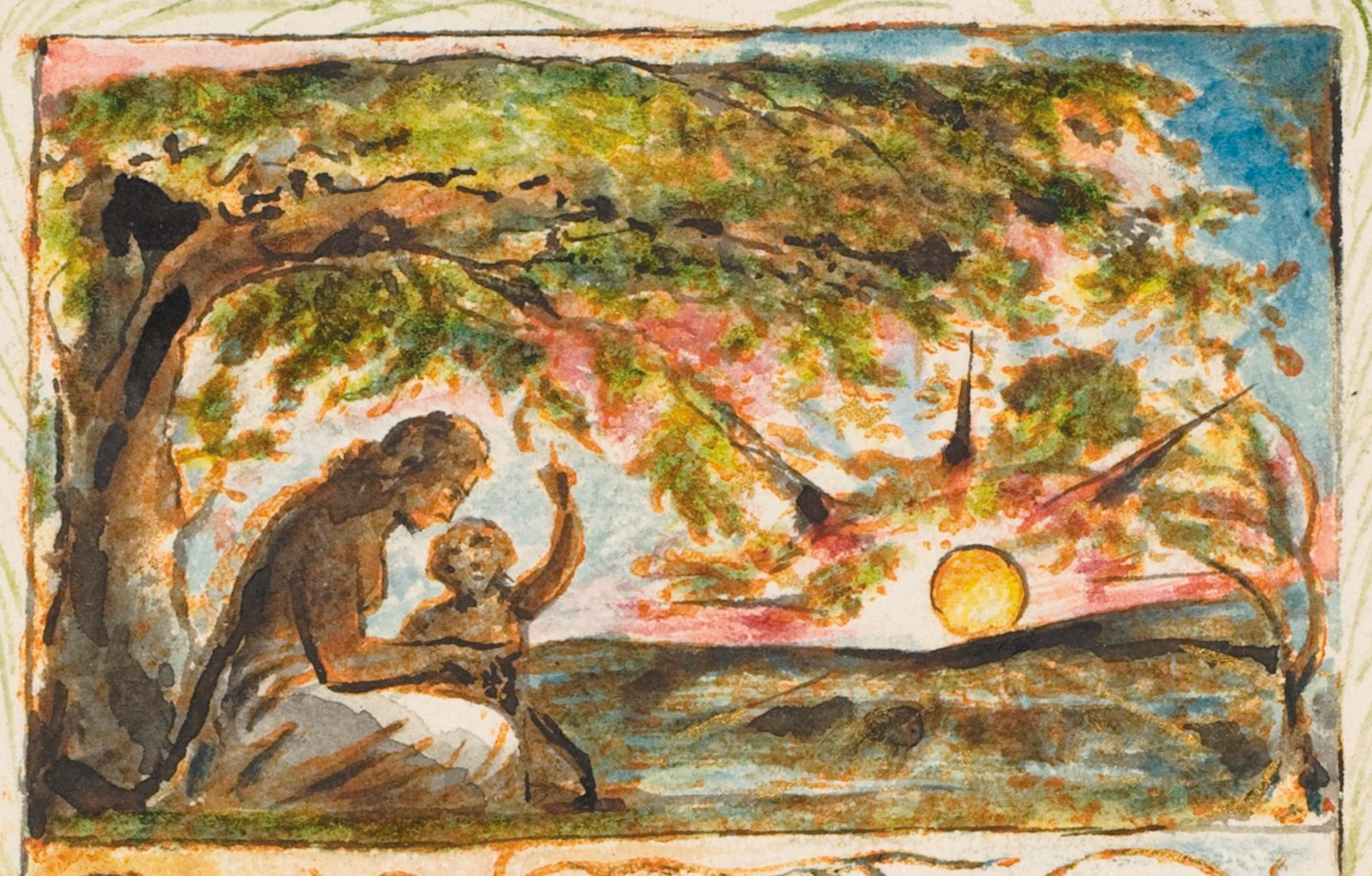BibliOdyssey Blake Illuminations
In 1789, William Blake wrote "Songs of Innocence.". These poems were written from the perspective of a child and focused on the theme of innocence. However, in "Songs of Experience," Blake shows that innocence is corrupted and destroyed by human experience. This is a powerful message that still resonates today.

Songs of Innocence and of Experience by William Blake Penguin Books
Songs of Innocence and of Experience, masterpieces of English lyric poetry, written and illustrated by William Blake. Songs of Innocence, published in 1789, was Blake's first great demonstration of "illuminated printing," his unique technique of publishing both text and hand-coloured illustration
William Blake Songs of Innocence and of Experience Nurse's Song
Plot Summary Songs of Innocence and of Experience is a two-volume illustrated book of poetry published in 1789 and 1794 by the English poet and painter William Blake.

Songs of Innocence and of Experience, object 28 (Bentley 25, Erdman 25
William Blake was born in London in 1757. He was apprenticed to a master engraver and then studied at the Royal Academy under the guidance of Joshua Reynolds. In 1789, he engraved and published Songs of Innocence and the contrasting Songs of Experience came later in 1794. A poet, painter and printmaker of great originality and imagination, his work was largely unrecognized during his lifetime.

‘The Tyger’ from William Blake’s Songs of Innocence and Experience
Synopsis. William Blake's Songs of Innocence and of Experience includes some of the visionary poet's finest and best-loved poems such as 'The Lamb', 'The Chimney-Sweeper' and 'The Tiger'. Part of the Macmillan Collector's Library, a series of stunning, clothbound, pocket-sized classics with gold-foiled edges and ribbon markers.

William Blake’s Songs of Experience William blake art, William blake
William Blake (1757 - 1827) William Blake's volume of poetry entitled Songs of Innocence and Experience is the embodiment of his belief that innocence and experience were "the two contrary states of the human soul," and that true innocence was impossible without experience. Songs of Innocence contains poems either written from the.

William BLake Songs of Innocence and of Experience, Plate 40 The
BY WILLIAM BLAKE london : r. brimley johnson. guildford: a. c. curtis. mdcccci. CONTENTS SONGS OF INNOCENCE INTRODUCTION Piping down the valleys wild, Piping songs of pleasant glee, On a cloud I saw a child, And he laughing said to me: 'Pipe a song about a Lamb!' So I piped with merry cheer. 'Piper, pipe that song again.'

William Blake's Songs of Innocence and Experience [page 1] William
Analysis The opening image of wandering, the focus on sound, and the images of stains in this poem's first lines recall the Introduction to Songs of Innocence, but with a twist; we are now quite far from the piping, pastoral bard of the earlier poem: we are in the city.
William Blake Songs of Innocence and of Experience Nurses Song The
(May 2015) Songs of Innocence and of Experience Shewing the Two Contrary States of the Human Soul title page Songs of Innocence and of Experience [1] is a collection of illustrated poems by William Blake.

Ill. for Songs of Innocence and Experience William Blake 1923
The very idea of songs of innocence is an idea that comes from a no longer-innocent perspective. This is clear throughout the Songs of Innocence, for example in "The Nurse's Song" and "The Little Black Boy."
William Blake Songs of Innocence and of Experience Infant Joy The
William Blake was an English poet, printmaker, and painter who was born in 1757 and died in 1827. In 1789, Blake published Songs of Innocence, a collection of 19 poems, and in 1793, he published Songs of Experience, a collection of 28 poems.

Songs of Innocence and of Experience William Blake Macmillan
11 by William Blake. Songs of Innocence and of Experience by William Blake. Read now or download (free!) Choose how to read this book Url Size;. Songs of Innocence and of Experience Credits: Updated: 2021-12-24 Credits: Updated: 2021-12-23 Language: English: LoC Class: PR: Language and Literatures: English literature: Subject:

William Blake Songs of Innocence and of Experience by S. SenBuy
William Blake's Songs of Innocence and of Experience certainly ranks among the most distinctive and individual collections of poetry in a century obsessed with originality and genius. It was not even published in a conventional way. Songs began life as an exercise in self-publishing, and never reached an audience in Blake's lifetime beyond those few collectors who bought copies printed by the.

Songs of Innocence and of Experience, object 35 (Bentley 41, Erdman 41
Songs of Innocence and of Experience (1794) Europe a Prophecy (1794) The First Book of Urizen (1794) The Song of Los (1795) The Book of Ahania (1795). "Peter Otto's William Blake (Oxford, 2018) presents the latest edition of Blake's selected works. Part of the 21st-Centu-ry Oxford Authors series, the book runs over 800 pages, and is rich.

️ Innocence experience what is the difference. The Difference Between
William Blake described innocence and experience as "the two Contrary States of the human soul." His theory of Contraries is summarised in The Marriage of Heaven and Hell: "Without Contraries is no progression. Attraction and repulsion, reason and energy, love and hate, are necessary to human existence." A longer passage in the same work develops […]

Illustration by William Blake from his Songs of Innocence and of
Aug. 12, 1827, London (aged 69) Notable Works: "A Vision of the Last Judgment" "Auguries of Innocence" "Jerusalem: The Emanation of the Giant Albion" "London" "Milton" "Songs of Experience" "Songs of Innocence" "The Everlasting Gospel" "The First Book of Urizen" "The Tyger" "Vala or The Four Zoas" "Visions of the Daughters of Albion" (Show more)